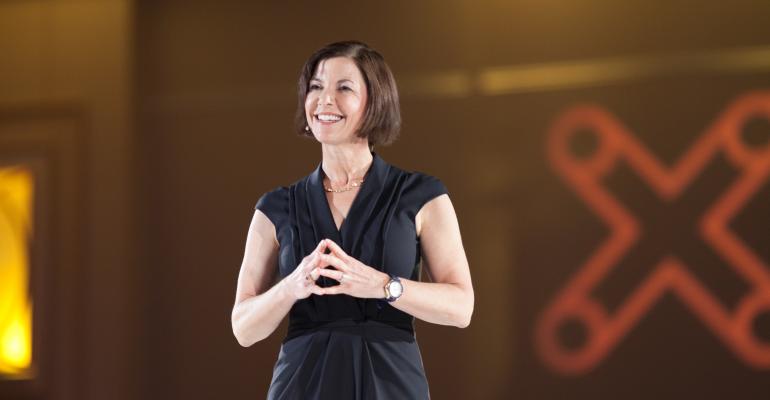Have you ever had to take scissors and hack your way through that plastic wrap enveloping some item you bought, usually something the store management thinks is steal-worthy? Uh huh, so you know exactly what she meant when Lisa Kay Solomon, emcee of American Society of Association Executives’ recent Xperience Design Project, invoked the concept of “wrap rage.”
While the product itself may be beautifully designed, the packaging is designed for stackability, or being theft-proof—with the seller, not the end user, at top of mind. So you start off your relationship with this new thing kind of hating it a little for being so hard to get to.
You do not want your meeting to be like that! Solomon, who is managing director of Singularity University, said that it’s having content that’s spot on is, believe it or not, the easy part. If the wrapper—be it the pacing, the room setup, or the methods of engaging participants—is designed with the meeting host’s need foremost instead of those of the participants, they will know it. And it will tick them off.
Yes, you want to connect people emotionally, but not in a negative way, what Solomon dubbed “meeting rage,” where participants give up on what’s going on in the room and turn to their phones. Functional utility is important to great design, she said, but so is the ability to surprise, delight, excite, and energize participants.
That could mean taking a chance, which is always uncomfortable. But that’s OK, she said. “Allow yourself to feel nervous or worried,” as you work through new ideas to change up your events. “Infuse emotion into your events. Lean into feeling uncomfortable, because that leads you to push beyond” the boundaries that hold meetings in the blasé zone. “If what you’re doing is backed by purpose and intension and a sense of service to the people you’re serving, that will allow you to be courageous to bring that idea forward.
“Think of yourself as a designer—be a rebel with a cause,” she said.
She also gave participants her three principles for design thinking:
• Promote discovery. “Ask more questions than you provide answers to. Design starts with curiosity.”
• Engage the whole person. Try to find ways to “Connect with their hearts, spirits, and whole bodies.”
• Create a narrative arc. Your even should have a beginning, a middle, and an end. “It should have more of a hero’s journey than a flatline,” she said.
“Ask yourself what experience you want to deliver in every aspect of your event—including the packaging.”
For more on XDP, please see Did XDP Launch Herald a New Model of Meeting?





